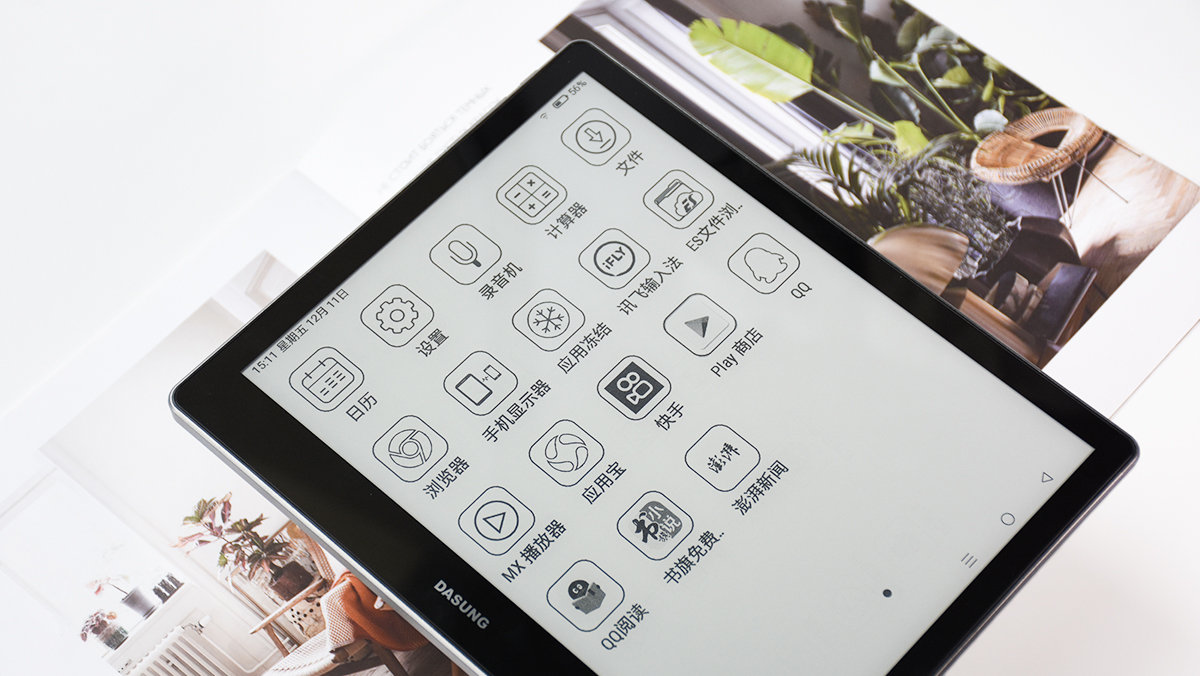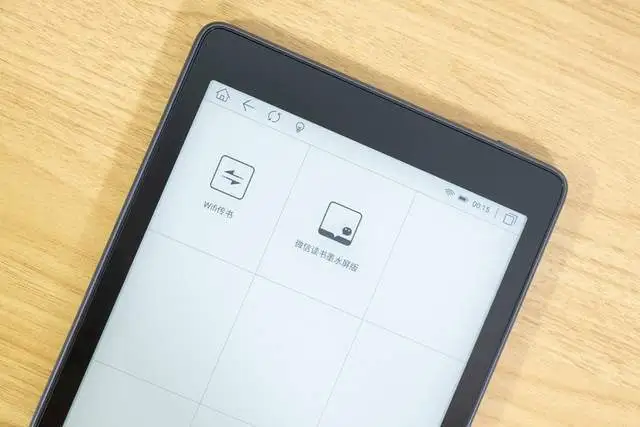Techlion Display
LCD Module Manufacturer
How to choose an ink screen reader?
For e-ink screen products, the first thing that comes to people’s mind is Amazon kindle, which is still the world’s largest player in the field of e-books. Low power consumption, eye protection, these advantages make kindle harvested countless users. Of course there is an important function: cover the ramen.
The largest supplier of ink screen for Taiwan E Ink, common for black and white display, there are also color, black and white ink solution is currently widely commercialized on the market. The same color ink screen also has a small range of commercial, high cost, low refresh rate, poor display color constraints on its development. The biggest feature of the ink screen for eye protection, the screen display is driven entirely by the voltage, the screen itself does not emit light, when the voltage is lower than or with the screen wF (waveform) timing does not match the anomalies such as splash screen, black blocks, and residual heavy shadow. And one of the residual shadow is one of the points that users complain about ink screen more.

Contents
- 1 First, the core advantages of ink screen products: eye protection and low power consumption.
- 2 Second, the core function of ink screen products: small size reading, large size reading + handwriting
- 3 Third, the ink screen system: open or closed?
- 4 Answer the question: Why is it so expensive & why can’t I buy an iPad?
- 5 In summary, summarize what I think an excellent quality ink screen machine should be like:
First, the core advantages of ink screen products: eye protection and low power consumption.
For the product hardware itself, there are two main components are extremely critical:
(1) power management IC; this piece is more mature, more mature chips on the market, not to repeat here.
(2) the main control chip; focus on the main control chip, the current e-book reader brand many, each family chooses a different chip. In these chips in the ink screen driver can do the best is Marvell and SXP, these two chips can achieve power consumption, performance, display effect to achieve the best, and by the official recognition of the E Ink, and can unlock the E Ink wF timing, the other chips can not be unlocked E Ink wF timing files, because the E Ink timing belongs to the core of the ink screen display. Why can other chips unlock the wF timing to drive the screen? Actually it is very simple: 1) the display effect is not up to; 2) by cracking (tacitly authorized by Gentech). However, the risk of cracking is that the wF timing corresponding to different screens of the meta is not the same, and its final effect will be unsatisfactory.
In the existing ink screen brand, which Sony used Marvel, this chip can only be used by Sony. The use of NXP i.mx series chips are kindle, iReader, reMarkable, Kobo and other manufacturers, the rest of the manufacturers, such as Boox’s certain models are used on the JDRead, JDRead has also used NXP’s chip, the other basically did not use. Why?
Because the mainland has the R & D strength to do ink screen companies are few and far between. KDDI’s machine is used in the way of OEM. The use of OEM is currently the practice of most manufacturers, on the surface to save time and trouble, can imagine an ODM products can be based on the user as the first point of departure to consider the product? Can collect excellent high-quality products? This also leads to the user does not trust the domestic great reason, the user’s eyes are bright, if the ODM can do a good job of the product. Then the flagship products of cell phone manufacturers will not be self-research.
In the past two years, the large screen market (10.3, 13.3-inch), especially 10.3-inch ink screen products appeared to focus on the outbreak, this is because everyone sees a piece of the market: education.
From the e-commerce platform on the ink screen sales, in the small screen market (6 inch or so), now there are basically only two big players: kindle and iReader.
And the large screen market is in the stage of a hundred competitions: Sony, Boox, reMarkable, iReader, Moaan, Iflytek …… which is currently the world’s best reMarkable. Sony is also very competitive, 13.3-inch DPT-RP1, 10.3-inch DPT-CP1 are all very popular products in China. However, Sony’s high price dissuades many users. In mainland China, Boox and iReader are also doing OK, but there is a lot of room for improvement in terms of sales. Among them, Boox did many years of large screen, sea of machine tactics so that you can not distinguish between his products in the end which models, may be more famous for the BOOX Note Pro this 10.3-inch product, the other models are too confusing to figure out, sales and age is not proportional. Boox’s limitations lie in the positioning of the product itself. iReader began to get involved in the large screen last year, launched a 10.3-inch iReader Smart products, from the e-commerce platform sales is considered quite a potential brand.

Second, the core function of ink screen products: small size reading, large size reading + handwriting
(1) small-size ink screen focus on reading, eye protection, portable features deep many users like. Then the pure reading function, the content has become the key to the development of small screen.
(2) large size ink screen, reading experience is better, as a book of general size to read more real paper reading experience, and in addition to reading, increase the core function of writing, plus the pen is more imaginative, as in the paper writing, can be used to take notes, painting, reading annotations, etc., coupled with the cloud synchronization with the PC side of the synergistic after a light productivity tool attributes. Use a large screen to cover the ramen fit well, the ramen is more flavorful. Compared to the iPad, Surface, this LCD screen writing smooth, harsh feeling, ink screen focus, comfortable handwriting only all electronic products in the experience closest to paper. Therefore, after the emergence of large-size ink screen, attracted a number of brands to enter.
Third, the ink screen system: open or closed?
(1) the best function of the ink screen is to read. There is no right or wrong between open and closed, just the brand’s choice. The fastest time to refresh a frame on the screen of black water screen is 150ms to 180ms, think about it! On this refresh rate to do open system, experience can be imagined.
(2) Why do some brands choose to open it? Lack of content resources, open platform can install multiple apps, such as kindle. Doesn’t it sound awesome? But the actual use of heavy users understand that the open system is a natural enemy to the ink screen. So far no one in the Android platform to do open dare to say the best experience. The residual shadow is obvious, deformation, power consumption, transition animation effect is poor. The reason: 1) limited by the screen refresh rate. 2) the major app manufacturers did not go with the ink screen to do the adaptation optimization (small amount, not worth it). We understand that we hope to openly install various apps like Android phones, but the current reality is a poor experience. We look forward to future breakthroughs in meta-technology to significantly improve the ink screen refresh rate, but also look forward to the major app manufacturers are willing to adapt the ink screen, so that more users who do not want to become blind can enjoy the convenience of the ink screen. If geek users want to pursue an open system, it doesn’t matter, but most of our users are white, the pursuit is out of the box, stable and reliable.
So, I think closed system is the better choice.
Answer the question: Why is it so expensive & why can’t I buy an iPad?
For large-size ink-screen readers, Sony’s 10.3-inch DPT-CP1 costs $4,399 on Jingdong, and the 13.3-inch DPT-RP1 $5,299. The most common thing I come across is people asking why they don’t buy an iPad at such a high price.
Let’s answer why it’s so expensive first:
1) the high cost of large-size ink screen, to 10.3-inch example, the procurement cost from the E Ink in about 120 U.S. dollars, and can be and iPhone 11pro OLED screen price to compare;
(2) because of the small volume, because this is a niche market, the annual consumption is not large, high molding costs, R & D, operating costs are to be shared in the machine, it is not a high cost. Also because of the small volume, the bargaining power of the screen mentioned above is poor.
Then again, why don’t I buy an iPad?
Both iPad and surface have powerful processing power, complete ecosystem, higher value, faster response time. Especially in recent years have been productivity attributes, complete light office a breeze. These obvious advantages are almost all the disadvantages of the ink screen. So what are the advantages of the ink screen over the iPad? Why would someone be willing to spend four or five thousand to buy Sony Dafa?
(1) or eye protection: iPad this kind of LCD screen blue light will cross the lens to reach the retina, resulting in irreversible damage, of course, cell phones, computers, the same reason is also the case, using the iPad, cell phones to read books for a long time, this damage to the eyes of their own experience. And reading with an ink screen, turn off the front light, like a piece of paper, do not have to worry about this problem.
(2) writing experience: iPad’s own smooth glass screen, writing experience is poor, with the pen can not be well restored handwriting. Some people say that you can paste a paper-like film, paste the writing after some good, show the effect of clarity and deterioration;
3) Focus: think about a lot of people buy iPad is to buy before productivity, but iPad has too much interference with your reading, office information. And the use of ink screen almost can not do other things, you can only quietly read, write. Even in meetings no one will think you are playing games.
In summary, summarize what I think an excellent quality ink screen machine should be like:
Small screen reading machine:
1) Low power consumption;
2) With lights;
3) content resources;
4) closed system;
Large screen readers:
1) low power consumption;
2) content resources;
3) reading experience (multi-format reading annotations, page flipping, typography, zoom, landscape, etc.);
4) writing experience (friction feeling, note reduction and beautification);
5) closed system;
Power consumption: the actual use of 1 hour per day, available for more than 10 days can be. In this regard, Kindle best, iReader second. Other power consumption control is too general.
Content resources: it is difficult to down a large number of brands, the reason why Kindle sales are so high, is it because of the hardware itself? Essentially because of Amazon’s massive book resources.
